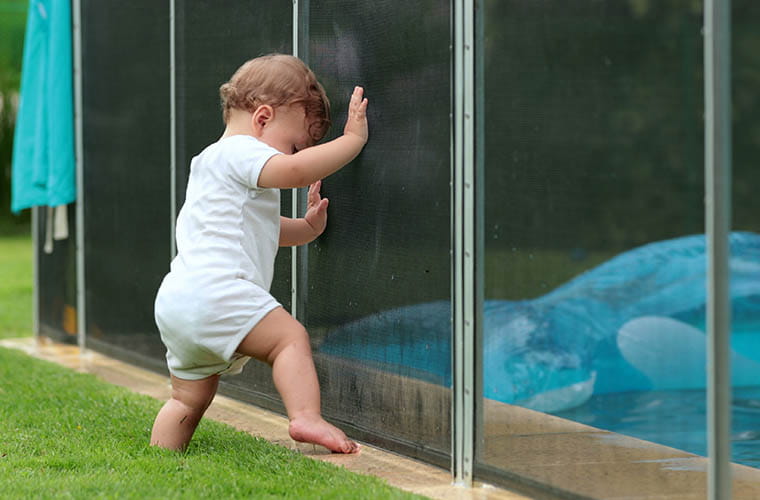Drowning Misconceptions and What You Can Do to Keep Kids Safe Around Water

Editor's Note: Last Updated on May 27, 2022
It’s something most parents think could never happen to their family, but nearly 1,000 children drown in the United States each year. Two-thirds of those deaths occur between May and August, making drowning the biggest summertime risk for children. For every drowning death, another five children are hospitalized for a near-drowning incident.
“Florida’s drowning rates for children 5 years old and younger are higher than any other state in the country,” said BayCare Kids Wellness and Safety expert Michelle Sterling. “In fact, enough children drown in Florida each year to fill almost four preschool classrooms.”
Below are five misconceptions about drowning and what you can do to help keep children safe around water.
Misconception 1 – If a child were drowning nearby, I would hear it.
Unlike the cries of help heard as a result of most injuries, drowning is often quick and quiet when it occurs. In children especially, there is typically very little splashing, crying or screaming.
Misconception 2 – It’s OK to leave my child alone in or near a pool or another body of water for a few minutes while I fix lunch/grab my phone/answer front door, etc.
During a recent study by Safe Kids Worldwide, approximately 35% of the participants admitted to having left their child at a pool for two or more minutes without supervision. The reality is that children can drown in just seconds.
Sterling adds that most drownings happen when a child is left unattended or during a brief lapse in supervision.
Misconception 3 – If there is a fence around the pool, my child is safe from drowning.
Curious children, especially those younger than 4 years old, can easily find a way out of the home and fall into bodies of water like pools, hot tubs and ponds. The first line of defense is active supervision, but having multiple barriers in place like door locks, door alarms, gates and fencing provides overlapping layers of protection.
Results from a Consumer Product Safety Commission study of home pool drownings in children under age 5 in Florida found that in 7 out of 10 drownings the child was not expected to be in or near the pool at the time the incident occurred.
Misconception 4 – My child doesn’t need swim lessons.
Swim lessons will not “drown-proof” any child, but having them learn basic swim skills does add another layer of protection.
“Every child is different, so enroll children in swim lessons taught by qualified instructors when they are ready,” said Sterling. “Afterwards, do not assume your child is safe from drowning. Children should always be supervised around any body of water.”
Misconception 5 – I don’t need to be trained in CPR.
The truth is that performing CPR on drowning victims immediately – before paramedics arrive – may prevent brain damage and be the difference between life and death.
“Research shows that if CPR is initiated right away, the child is three to five times more likely to survive with little to no long-term health implications,” Sterling notes.
What you can do about it:
- Put away all distraction items such as phones, books and magazines and actively supervise while children are playing in or near water, even in shallow wading pools. When there are several adults present, choose one to be responsible for watching children in or near the water for a certain period of time, such as 15 minutes. After 15 minutes, select another adult to be the water watcher.
- Never leave young children unattended in or near any body of water, including bathtubs, even for a moment.
- Since every second counts, always look for a missing child in the pool or nearby sources of water first.
- Never rely on a swimming aids such as water wings or pool noodles to protect a child.
- Enroll children in swimming lessons taught by qualified instructors when they are ready.
- For pool owners, install four-sided isolation fencing, at least 5 feet high, and equipped with self-closing, self-latching gates. Fencing should surround swimming pools and prevent direct access from a house or yard.
- Use door chimes or alarms to alert you when a door is opened and pool alarms, pool covers and pool fencing to add extra layers of protection.
- Keep hot tubs covered and locked when not in use.
- Learn CPR and basic water rescue skills. BayCare Kids Wellness and Safety Specialists teach a CPR and First Aid class at Children’s Board Family Resource Centers located throughout Hillsborough County. Visit familysupporthc.org for information on CPR classes available at your local resource center.
- Children should always wear a U.S. Coast Guard-approved personal floatation device when on a boat, near open bodies of water or when participating in water sports.
- Children ages 14 and under should never operate a personal watercraft.
